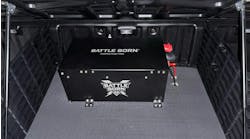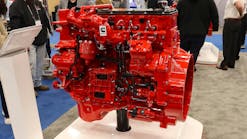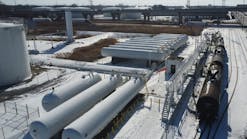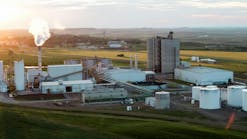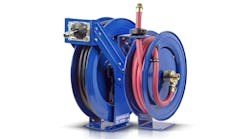What if, as you pulled into a truckstop and set your parking brake, your truck's high-horsepower engine automatically sensed you no longer needed power to the drivetrain, and reduced power except for the cab and sleeper? In its “tuned down” state, the engine ran quieter and used just over a pint of fuel per hour, saving thousands of dollars of fuel per year.
Is this something engine manufacturers thought up? “Yes and no,” said Eldon Willis. “The concept is real, but instead of the main engine itself being smart, that job is left to an auxiliary power system that is integrated into the vehicle.”
Willis is vice-president and chief technology officer of Auxiliary Power Dynamics LLC, which has developed and built the Willis Auxiliary Power Unit (APU).
This unit automatically goes to work when the truck's parking brake is set, according to Willis. “Through our digital unit controller, our APU automatically kicks in to provide power to all of the systems powered by the main engine as soon as the truck is parked,” he said. “When you start the truck, the APU automatically shuts down as the truck's main engine takes over the charging system.”
A three-cylinder Kubota engine provides the power. In addition, the Willis APU with all the options can run almost every operating system on a truck.
It also provides fuel savings and decreased emissions by reducing engine idling — and it helps the truck's engine and electrical system components last longer.
Compared with a full-size diesel, the Willis APU engine uses 72% less fuel to cool the cab and sleeper and 88% less fuel to heat the truck in the winter, according to Will Watson, vice-president — sales and marketing. At a fuel cost of $1.54 per gallon, a truck owner using the Willis APU could save $3,285 per year just on fuel. Additional savings of thousands of dollars could be realized from the extended life for the engine and other components under the hood, Watson said.
The Willis APU stands apart because of its integration with the truck's operating system, according to Watson. “Our APU can run almost every device on the truck,” he said. “We can heat or cool the truck cab and sleeper seamlessly through the existing HVAC system. Since the APU is using the truck's fuel line, it can also prevent fuel gelling.”
The Willis APU contains an alternator, an A/C compressor, and a heat exchanger for circulating coolant. Options include an air compressor, air starter, oil pump for pre-lubricating the engine, and a 1,500-watt inverter for AC power. By employing all these options, a truck operator would be able to eliminate the truck's electric starter and most of its batteries, Watson said.
“If the truck's alternator goes out, a sensor sends a signal and the alternator on our APU kicks in, allowing the truck to continue an operation,” Willis said. “If something happens to the truck's air system, a sensor alerts the driver and the APU takes over. Using the air starter in conjunction with the APU can actually eliminate most of the vehicle's batteries and electric starter, which could save the operator money and about 200 pounds in weight.”
Whether the Willis APU is purchased or leased, the truck owner could realize substantial benefits from a unit that offers improved operating efficiencies. Factors such as pending tougher idling regulations, increased policing of anti-idling laws already on the books, uncertain fuel costs, and the need to stay competitive are forcing truck operators to seek answers with definable paybacks.
